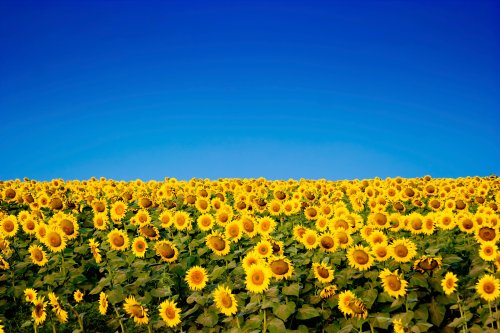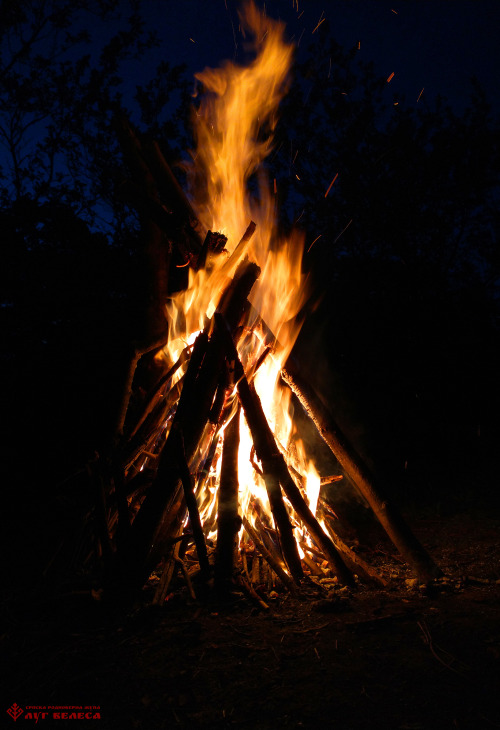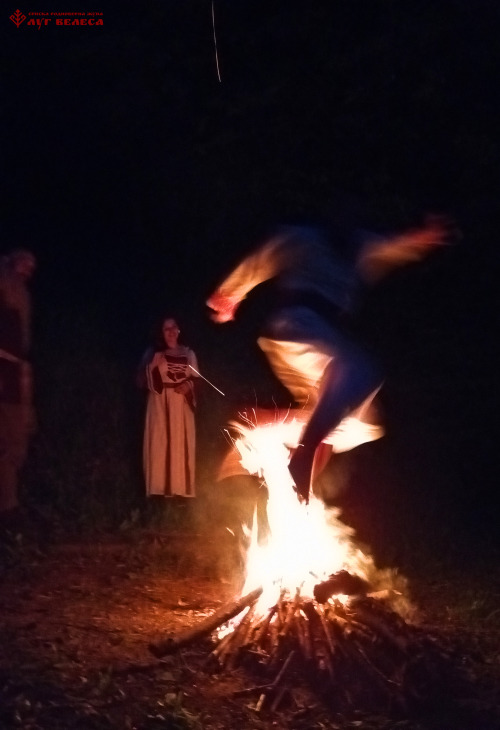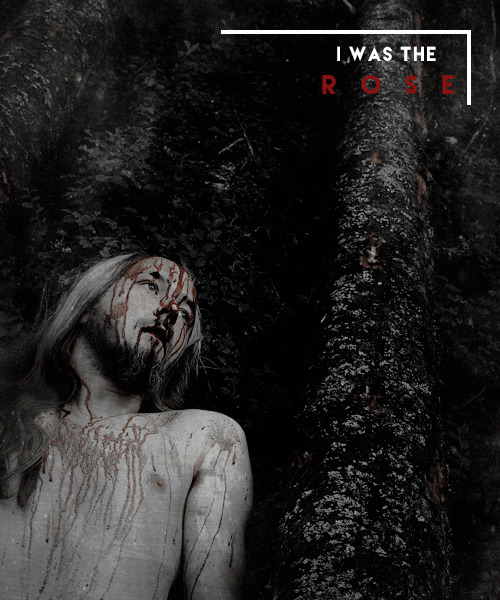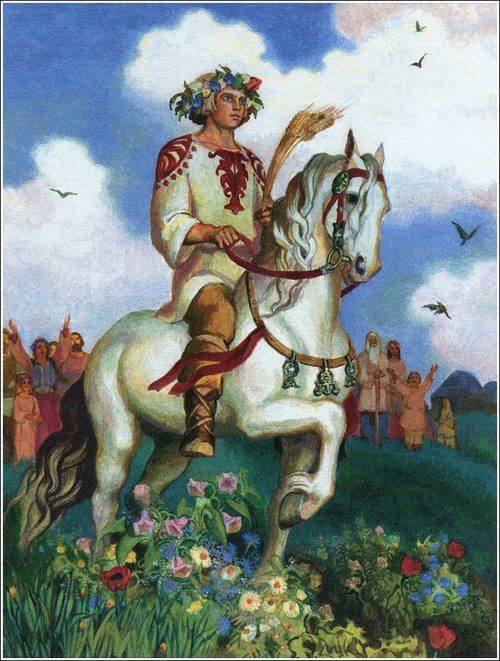#jarilo
MoodBoardMix Stand With Ukraine!
Sunflowers (sunyashniki) are especially loved in Ukraine, where golden fields of them face the sunrise in the east. They are Ukraine’s national flower, and in folk imagery represent the warmth and power of the sun, which was worshipped by pre-Christian Slavs.
To my Ukrainian followers, stay safe and strong !
Love you all❤️
Still worshipped by non-Christian Slavs! Jarilo is our sun god and god of the harvest, including grains and seeds, such as sunflower seeds and wheat, which appears on Ukraine’s flag as the yellow band. Jarilo is also the god of defensive warfare - not of aggression or senseless destruction but of self defense and protection.
We pray each day for Jarilo to be with the Ukrainian people, protecting them and lending strength to their soldiers.
Slava Jarilo! Slava Ukraine!
Post link

I put it on a picture for no one’s sake but my own.
Slava Jarilo, god of the Slavs
defender of the people
born of fire, god of war
made not to destroy
but to protect
shaped a daughter
a girl-child chasing cattle
in your father’s underground kingdom
picked up a sword
transforming, transitioning into a man
to teach the people not to slaughter
but to defend
to live in peace until pressed
to bear not the bite of the blade
but neither to cut into mankind first
Jarilo, god of warfare, of the defender
Jarilo, god of the oppressed and the attacked
Be with our Slavic sister Ukraine
Lend strength to her soldiers
And hope to those who cannot fight
God of war, be wherever the Russians try to invade
Knock their aircraft and their missiles
Burning from the sky
Protect her children
ANd be the fire in her guns
the flames in the souls of protestors
and the justice in the throats
of those who cry ‘no war’
Ярило, вставай рано, яр-яр вставай рано;
Ярило, мыйся бело, яр-яр мыйся бело;
Ярило, езди в поле, яр-яр езди в поле;
Ярило, возьми ключи, яр-яр возьми ключи;
Ярило, отмкни Землю, яр-яр отмкни Землю;
Ярило, пусти траву, яр-яр пусти траву;
Ярило, зеленую, яр-яр зеленую;
Ярило, пусти росу, яр-яр пусти росу;
Ярило, пусти росу, яр-яр пусти росу;
Ярило, медвяную, яр-яр медвяную;
Ярило, дай нам долю, яр-яр дай нам долю;
Ярило, счастливую, яр-яр счастливую.
————————-
Yarilo, wake up early, Yar-Yar wake up early;
Yarilo, bathe yourself white, Yar-Yar bathe yourself white;
Yarilo, ride in the field, Yar-Yar ride in the field;
Yarilo, take the keys, Yar-Yar take the keys;
Yarilo, unlock the Earth, Yar-Yar unlock the Earth;
Yarilo, release the grass, Yar-Yar release the grass;
Yarilo, the green grass, Yar-Yar the green grass;
Yarilo, release the dew, Yar-Yar release the dew;
Yarilo, release the dew, Yar-Yar release the dew;
Yarilo, the honey-like dew, Yar-Yar the honey-like dew;
Yarilo, bestow our fate, Yar-Yar bestow our fate;
Yarilo, fortunate fate, Yar-Yar fortunate fate .
Few moments from Jariljdan* celebration held by the members of Lug Velesa.
*festival that celebrates revitalizing return of Jarilo.
Post link
It’s Jarilo’s Day!
(well supposedly)
Jarilo, our beautiful god of of spring and fertility,whose worshiping has survived in the form of celebrations of christian St. George. Up until the 19. century in Russia, Belarus and Serbia great festivals dedicated to Jarilo were held, in which a doll or a person dressed as a young man in white robes, rode on a horse carrying wheat, while people sang songs about Jarilo’s return from a distant land. Similar festivities under the name Green Jurij were held in Croatia and Slovenia. In Serbia and Bosnia there are still parties held in forests and fields on the morning of St. George’s day. These parties are also remains of pagan festivities which had an erotic feel to them - basically you were supposed to go a bit wild. There were also ritual bathings in rivers and lakes, jumping over fires and decorating your body with willow leaves and stinging nettle. Animal associated with Jarilo is lamb and this was typically the day that marked the beginning of “lamb eating season”. Lamb was supposed to be slaugthered and eaten as a part of sacrifice to the god. It’s recorded that in eastern Serbia in 20th century on St. George’s day, while killing the lamb the head of the household would use the lamb’s blood to bless every person in the family by making a mark of blood on their forehead. This is similar to the tradition that was done on on Perun’s day when all soldiers were supposed to be marked with the blood of a killed animal, either bull or a rooster, which leads us to Jarilo’s warrior aspect Jarovit.
Jarilo is my favorite god, because I consider him the patron god of my family
Post link
Ludowe przekazy z XIX wieku opisywały ponadto Jaryłę jako realnie żyjącego niegdyś człowieka – mieszkańca miasta Kostromy: wesołego usposobienia, który pochwalał miłość, urządzał zabawy i tańce, a kiedy w wieku 150 lat zmarł, powstał zwyczaj „погребения Ярилы”, w którym go wspominano.
-Semantyka obrzędów wiosennych związanych z Marzanną i Jaryłą (Próba rekonstrukcji “Prasłowianskiego tekstu”) by Michał Łuczyński
[eng]
Further, folk tales from XIXth century described Yarilo as a historical persona, that really lived once upon a time — an inhabitant of the town of Kostroma: good spirited, supportive of love, a frequent organizer of parties and dances. When he died at the age of 150 years the tradition of „Yarilo’s burials” was established to commemorate him.
-Semantics of the spring rites connected to Marzanna and Jaryło (An attempt at reconstructing “the Proto-Slavic text”) by Michał Łuczyński, my translation
While gazing into the beloved’s eyes may be one way of signaling the lover’s desires, another charm that appears both in the literary sources and in the spell books is the apple charm—a type of spell in which the lover throws an apple (or a quince, a pomegranate, or some other seed-filled sweet fruit) at the target, transferring his love to the one who picks up this token charged with erotic resonances. Ovid recounts the tale of a clever youth, Acontius, who won his bride by tossing an apple inscribed with the words “I vow to marry Acontius” over the garden wall where his beloved would pick it up and read it aloud; the vow was magically effective, to the extent of incurring divine punishment when the girl’s parents tried to prevent the marriage.
A spell preserved on a first-century (BCE or CE) papyrus makes use of the same idea:
To whichever woman I give or whichever woman I throw the apple at or hit with it, setting everything aside, may she be mad for my love—whether she takes it in her hand and eats it or sets it in her bosom—and may she not stop loving me. O Lady Kyprogeneia, bring to perfection this perfect incantation.
Again, as with the eye contact spell, we can see the blurring of lines between magical action and simple flirtation—the tossing of the apple to the girl, catching her attention; the girl picking it up and putting it to her lips, or perhaps tucking it away into her bosom. Indeed, in Lucian, one courtesan complains of her boyfriend flirting with another woman by tossing her a bit of apple, which she kissed and put between her breasts. Tossing the apple is the active step in the relationship, signaling one’s interest, so a prostitute may toss an apple at a potential client, to catch his attention and express her readiness for sex.
The apple serves as a symbol of sexual desire, perhaps of fertility, certainly of erotic interest, which is why, Plutarch tells us, a quince or an apple was presented to a new bride on her wedding night, symbolizing the awakening of her sexuality, legitimized and sanctioned by the ritual of marriage.
-Drawing down the moon by Radcliffe G. Edmonds III
Spośród widocznych atrybutów Marzanny wymieniano: jabłko, klucze, kobiece ubranie, wieniec i ozdoby. Symbolice jabłka wiele uwagi poświęcił R. Katičić, który doszedł do wniosku, że jabłko to symbol miłości narzeczonej do „Zielonego Jerzego”.
Jaryło, pokonując po drodze most, przyjeżdża na dwór ojca. Staje do zawodów o rękę Morany. Ta znajduje się na zielonej łące, pasie gęsi, otwiera drzwi (wrota). Rzucając w bohatera jabłkiem, wskazuje go jako swojego wybranka.
-Semantyka obrzędów wiosennych związanych z Marzanną i Jaryłą (Próba rekonstrukcji “Prasłowianskiego tekstu”) by Michał Łuczyński
“Among visible attributes of Marzanna the commonly named ones are: apple, keys, feminine clothing, wreath and jewelry/ornaments. R. Katičić gave a lot of attention to the the symbolism of the apple, arriving at the conclusion that it represents the love that the bride bears for ‘Green George’.”
“Jaryło passes through a bridge and arrives at his father’s court. He enters a contest for Morana’s hand. She can be found on a green meadow, grazing geese, opening doors (gates). She throws an apple at the hero, marking him as her chosen husband.”
-Semantics of the spring rites connected to Marzanna and Jaryło (An attempt at reconstructing “the Proto-Slavic text”) by Michał Łuczyński


